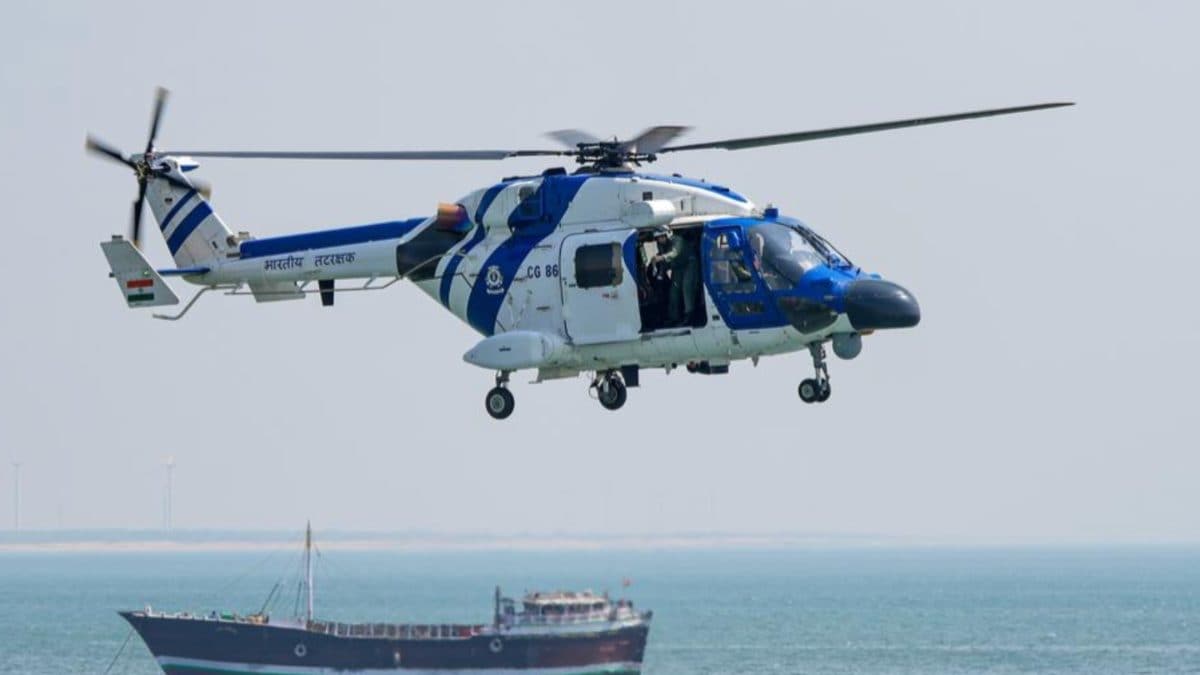A Coast Guard helicopter carrying an injured crew member from a ship in the Arabian Sea encountered a harrowing emergency, plunging into the water late Monday night near Gujarat. The incident, which occurred after 11 pm, led to three crew members going missing, while one was rescued. The incident highlights the dangers faced by emergency responders, even in seemingly routine operations.
Emergency Landing and Rescue Efforts
The Indian Coast Guard confirmed that the helicopter, an Advanced Light Helicopter (ALH), was on a mission to evacuate an injured crew member from the Motor Tanker Hari Leela off the coast of Porbandar, Gujarat. The incident unfolded in the late evening hours when the helicopter, after launching at 11 pm, was forced to make an emergency landing in the Arabian Sea. Swiftly, the Coast Guard initiated a large-scale search and rescue operation. They deployed four ships and two aircraft to comb the waters, leaving no stone unturned in the desperate search for the missing crew members.
The Challenging Sea Rescue
The Coast Guard faces an arduous task in finding the missing crew members. The search operation is ongoing, with the Coast Guard’s resources relentlessly combing the sea, leveraging all available technology and expertise. The successful rescue of one crew member provides hope for finding the others, but time is of the essence, and the vastness of the sea poses a significant challenge.
Potential Causes and Investigation
The cause of the emergency landing is currently under investigation. The Coast Guard has not provided any details on the possible reasons for the crash, and it remains a major concern.
Possible Factors in Emergency Landing
While the official investigation is underway, potential factors contributing to the emergency landing could include:
- Mechanical Failure: An unforeseen mechanical issue with the helicopter itself, perhaps in the engine or control systems.
- Weather Conditions: The prevailing weather conditions, particularly strong winds or sudden turbulence, may have played a role.
- Technical Difficulties: A malfunctioning instrument or system that impaired the pilot’s ability to safely maneuver the aircraft.
Prioritizing Safety and Emergency Preparedness
This incident underscores the critical importance of safety measures and preparedness in the face of emergencies at sea. It serves as a stark reminder of the unpredictable nature of maritime operations, even during routine missions.
Lessons Learned and Future Measures
This tragic event highlights the need for a multi-pronged approach to enhance safety and ensure the well-being of those involved in maritime emergencies.
- Thorough Aircraft Maintenance: Rigorous maintenance schedules and comprehensive inspection programs are essential to prevent mechanical failures.
- Improved Training: Enhancing pilot training programs to better equip them to respond effectively to emergencies and weather-related challenges.
- Enhanced Communication: Robust communication systems are crucial for swift response and effective coordination between ships, aircraft, and ground control during emergencies.
Take Away Points:
- Sea Rescue Challenges: The challenging conditions at sea, with vastness and unforgiving weather, make sea rescue operations incredibly difficult.
- Safety is Paramount: This incident underscores the vital need for constant vigilance, proper training, and comprehensive safety protocols in maritime operations.
- Continuous Learning: Investigating incidents like this provides invaluable lessons that contribute to refining protocols, training methods, and overall safety measures.
- Commitment to Recovery: The Indian Coast Guard is demonstrating commitment to the rescue mission, deploying significant resources and showing resilience in their relentless search for the missing crew members.









